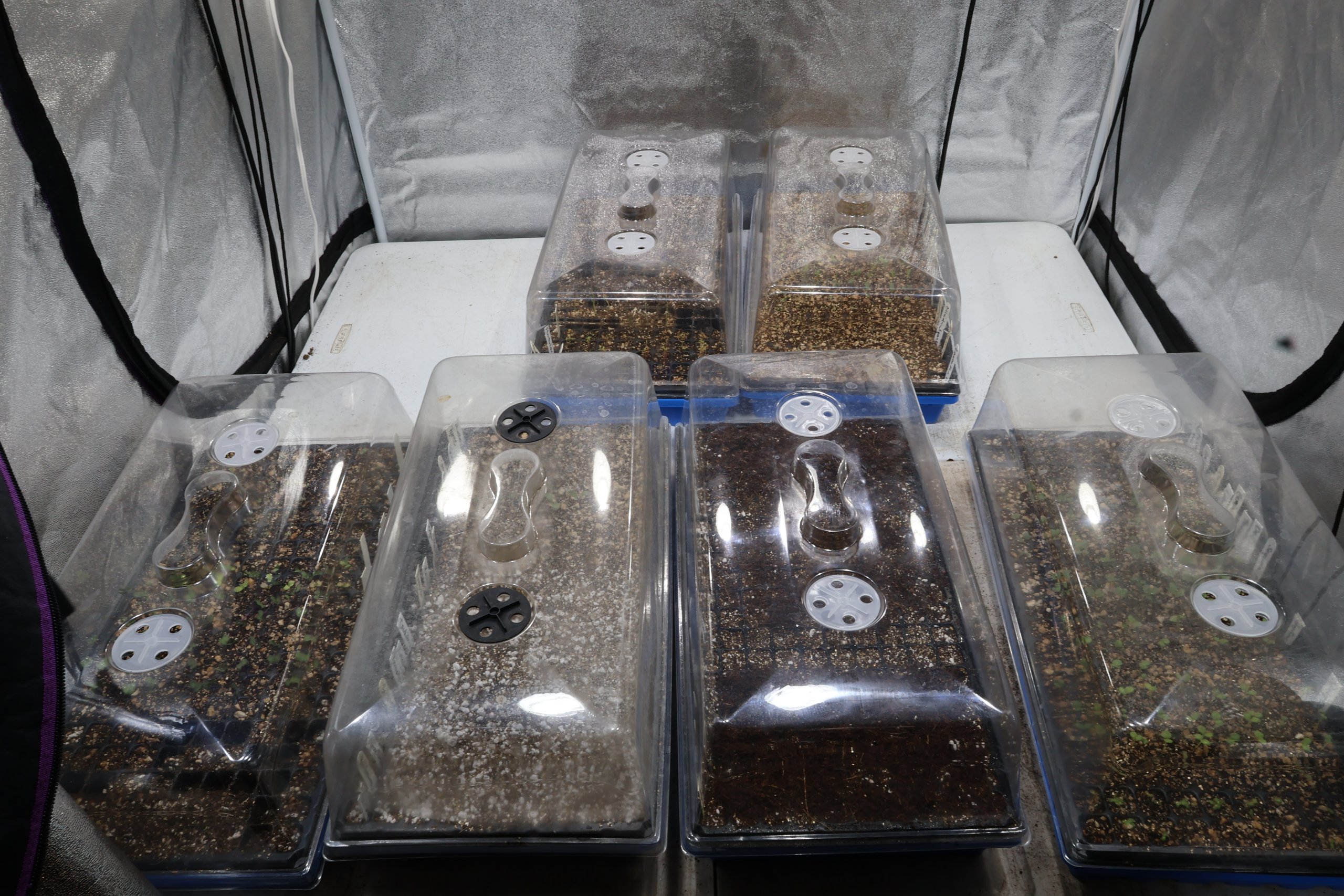Six weeks to last frost is a doozy for northern indoor germination, especially if you grow a lot of flowers! Our indoor germination just exploded in capacity by close to 50%, just from this weekend’s sowing. If you’re not a flower grower, this weekend might only barely register for you.
If you think about it, though, this makes a lot of sense with the “rest of the world” (i.e. not the subarctic), where the overwhelming majority of the northern hemisphere is nearing or are well past their average last frost dates. This is the time where naturally sown seeds at lower latitudes are just starting to warm up and are germinating more naturally. Versus here, where we’ve still got snow on our gardens and green up is still weeks away.
As many of you know, we publish our own seed sowing schedule. So, we have to think a lot about this kind of stuff. We are regularly observing the vegetables and flowers we’re growing to make sure the timing that we publish makes sense and is relatively accurate. What’s interesting is that the timing we recommend is not always the same as what “down south” would do, especially when it comes to flowers.
One of the things we have to decide when recommending a sowing time for any given flower type is when those flowers will come in. Many flowers are genetically programmed to germinate, grow to a specific size and then produce their prize. Yet, others will grow and then continually bloom for a month or more. Shifting that sowing time can change when you get blooms and for how long. There’s an art to figuring out when to sow those seeds! And in case you didn’t know, we do regularly revisit our recommendations based on those observations.
This also applies to vegetables to some degrees as well. For example, with some things, we like to target where average maturity comes before the peak heat of summer hits. This helps us (and you) ensure that you’ll get to harvest that plant, rather than lose it to early flowering. Or, with challenging veggies, we need to make sure it can be done in the short, 100 to 130 day growing seasons we see in the north.
Most growers at lower latitudes have no idea the challenges we face up north. In many places, you have months of acceptable planting time for when you might sow something. Whereas, we have to work with precision, timing things impeccably. Curiously enough, we have more in common with people growing in places like the deserts of Nevada than we do with the corn farmer in the fertile soils of Iowa. In the extremes, timing matters.
I don’t know if you all do this, but I often imagine myself growing in different places. The deserts of the southwestern US. The tropics of Hawaii. In the rainforests of South America. What would I do at McMurdo Station? But, curiously, none of these places are “regular old, boring climates” where growing everything is easy.
I don’t know what that means. But, I think I’ll leave it there before there’s definitely no point to this post!


